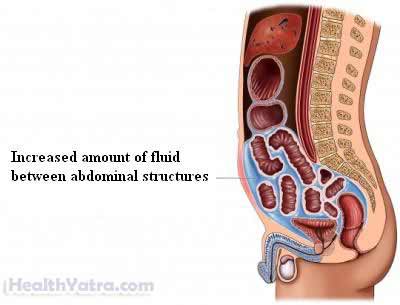Definition
Usually, there is very little fluid in the abdominal cavity. However, there are a number of conditions that can cause fluid to build up in the abdomen. This is called ascites. When fluid builds up, an abdominal paracentesis may be done. With this procedure, a needle is used to remove a sample of fluid or to drain fluid that has built up.
Reasons for Procedure
This is done to find out why there is fluid build-up in the abdomen. Causes may include:
- Bleeding
- Infection
- Diseases of organs, such as the liver
- Cancer
This procedure may also be done when fluid in the abdomen:
- Makes breathing difficult
- Causes pain
Abdominal fluid can return until the condition causing it has been treated. You may need to have the procedure again.
Possible Complications
Complications are rare. But no procedure is completely free of risk. If you are planning to have an abdominal paracentesis, your doctor will review a list of possible complications, which may include:
- Bleeding
- Infection
- Accidental piercing of structures in the abdomen
Some factors that may increase the risk of complications include:
- Smoking
- Bleeding disorder
- Poor nutrition
- Pregnancy
- Full bladder
- Infection in the area where the paracentesis instrument will be inserted
Be sure to discuss these risks with your doctor before the procedure.
What to Expect
Prior to Procedure
Your doctor may do some or all of the following:
- Physical exam
- Blood tests
- X-ray
- CT scan
- Ultrasound
- MRI scan
If the procedure is scheduled (rather than done in an emergency):
- Do not eat or drink for 12 hours before the procedure.
- Empty your bladder just before the procedure.
Anesthesia
You will receive local anesthesia. The area will become numb. You will stay awake during the procedure.
Description of the Procedure
This is usually done in the doctor’s office. In some cases, your doctor may have you go to the hospital before or after this procedure. If you are already in the hospital for a different reason, this procedure will not extend your stay.
In most cases, you will lie on your back. In some instances, you may need to be in a different position. The area where the needle will be inserted is cleaned with a solution and draped with sterile cloths. An injection of a local anesthetic will be given to numb the area. The doctor will carefully insert the needle into the abdomen. The fluid will be removed using a syringe.
The amount of fluid removed depends on your condition. If it is being done to make a diagnosis, the doctor will remove a small amount of fluid. If the procedure is being done to make you feel better, more fluid may be removed.
How Long Will It Take?
About 10-15 minutes (depending on how much fluid needs to be removed)
How Much Will It Hurt?
There will be some stinging or burning while the anesthesia is injected. After the area is numb, you will not feel pain.
Post-procedure Care
At the Care Center
You will stay in the recovery room for a few hours. Your blood pressure and other vital signs will be monitored. If you have a lot of fluid leakage or are having trouble breathing, you may need to stay in the care center.
At Home
- Rest the day after your procedure.
- Follow your doctor’s instructions .
Call Your Doctor
After arriving home, contact your doctor if any of the following occurs:
- Signs of infection, including fever and chills
- Redness, swelling, increasing pain, excessive bleeding, or fluid from the paracentesis site
- Pain that you cannot control with the medicines you have been given
- Cough, shortness of breath, feeling faint, or chest pain
- Swelling of the abdomen
In case of an emergency, call for medical help right away.

